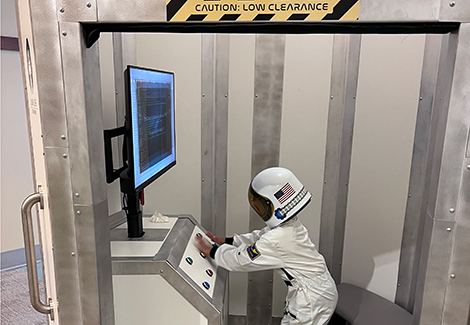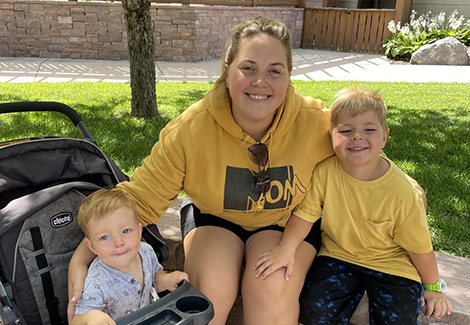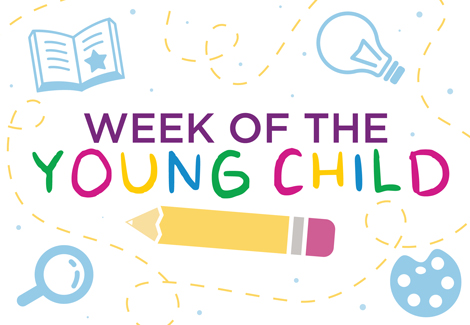As a destination for more than 100,000 guests a year, we are in the business of embracing and welcoming guests from a variety of backgrounds.
That is why, in December 2016, the Children’s Museum of South Dakota joined the Cultural Competency Learning Institute. CCLI is a program that offers processes and resources to help museums work toward a more equitable and inclusive culture. Executive Director Kate Treiber, Director of Guest Services Kati Hanson, and Director of Education Carrie Benson led the initiative and recently shared the museum’s experience thus far during the Association of Children’s Museums annual InterActivity conference in Raleigh, North Carolina.
What is the Cultural Competency Learning Institute?
The Cultural Competency Learning Institute helps museums increase their organizational capacity around diversity, inclusion, and culture.
Using an application process, organizations are invited to participate in yearlong professional development that includes tools such as workshops, webinars, a network of peer museums, and cross-departmental team engagement.
CCLI encourages institutions to identify and build on their strengths to improve services offered to people from different cultural backgrounds. Each organization chooses an initiative and for us, it was to create the powerful first steps in cultural change through professional and personal development using reflection, storytelling, and documentation.
Why CCLI?
It is through learning that growth happens. For the team at the Children’s Museum of South Dakota, understanding our personal cultures and stories creates awareness of our assumptions and biases. Once these are known and better understood, we as an organization can collectively work toward creating real organizational change.
Whether it is through our physical presence related to building and exhibit design, the way staff engages with museum guests, or our relationships with organizations and people in the community, the work we do related to CCLI can serve as a lens of inclusion and understanding. At the end of the day, the work we are doing through CCLI is about personal development and being welcoming to all.
Further, the terms “Strong Image of the Child” and “Children are Capable and Competent” are embedded in our museum philosophy and culture – and we want to instill that across the board with our museum team, our volunteers, our board members, and our museum stakeholders.
If we can’t look inward first, we can’t learn and grow together as an organization.
What specifically has changed at the museum because of CCLI?
More than anything CCLI has offered a new perspective that can be used in all of our daily routines. Taking time for reflection in the midst of daily work is key, and it is encouraged.
More than anything CCLI has offered a new perspective that can be used in all of our daily routines. Taking time for reflection in the midst of daily work is key, and it is encouraged.
CCLI has become a part of the museum’s routine in these ways:
- Onboarding Process: All employees go through what we call a “culture camp,” which is a training and orientation process that describes our core values. We share museum history but also talk about behaviors that are encouraged in our space, such as play, improving ourselves, leveraging our talents, being engaged, taking care of ourselves, and being open to new ideas.
- Provocation Questions: Questions designed for employees to get to know each other are posted in the employee break room. Simple things, such as “What are you looking forward to this summer?” offer an easy way to engage, even if work shifts do not overlap and people do not see each other in person.
- Press Play: All staff come together twice a week for 20 minutes. It’s a time to build relationships and play together. Activities are varied and can include testing out a new game in the museum gift shop or spending time sharing which item in the museum represents you, such as a family tradition or a memory.
- Day-to-Day Routines: Our work through CCLI has informed everything we do, whether it is related to our strategic planning process, weekly leadership team meetings, or our day-to-day routines.
What are we learning?
Cultural competence is a process of lifelong learning. Familiarity with the language used during the CCLI process is key to making sure we have a basis from which to grow. Words such as culture, diversity, and inclusion can mean different things to different people, so the process started with a definition of what those terms mean to us personally and how they relate in the work that we do.
While we’ve learned a lot, the true lessons are that the work takes time and our work is never done. In addition, this work is not easy, and everyone comes at it in a different way.
While we’ve learned a lot, the true lessons are that the work takes time and our work is never done. In addition, this work is not easy, and everyone comes at it in a different way. It is important for everyone involved to recognize the importance of meeting people where they are at.
Challenges, namely having the patience to trust the process, have reaped great rewards such as the understanding and trust that has been developed within the museum’s teams.
Employee feedback is key in measuring how we are doing. Surveys and other instruments have been implemented to get a better understanding of how the process is going. A case study of our experience is on the CCLI website, but a small sampling of feedback follows:
I feel that as an organization, we’ve gotten better at being aware of our personal biases as well as any potential biases that may be inadvertently present in our museum itself. –Associate Director Mike Mogard.
In order for you and your coworkers to make strides toward cultural competency, you have to let some of your walls fall down and realize that even though you are in the same work environment, you took two very different journeys to get there. It’s through revealing those differences that you learn more about each other and more about yourself. –Educator Jessica Flint
This work is an incredible asset to this museum. Not only will it affect us as team and staff, in opening up this work to the community it will help create a space that is welcoming to everyone who walks through the doors. –Director of Marketing Kerrie Vilhauer
This town is growing. There are many people from different countries and religions and cultures. I think it is important to offer more activities to get families together to share their experience in other countries. –Custodian Dora Castano
While this work is largely internal and philosophical, it can also result in activities and events (as Dora alluded to). With leadership on our behalf from Director of Education Carrie Benson, the museum hosted a Cultural Appreciation Day event in November 2017. The museum, with additional representatives from South Dakota State University (SDSU), the Brookings School District, and the South Dakota World Affairs Council, created an event that invited almost 250 fifth-graders from Camelot Intermediate School in Brookings to learn more about their personal culture, to strengthen their intercultural communication, and to identify the value of similarities and differences amongst personal cultures, especially within our community.
What’s next?
We know our work isn’t finished. We will continue to move forward and offer more opportunities to grow and learn from one another. We also will continue to look outward for additional opportunities in our community to share what we have learned. There is no one right path in the way cultural competency work comes to fruition. But we know that it is through continual learning, reflecting, and sharing that we can aspire to grow more as an inclusive and welcoming place.



